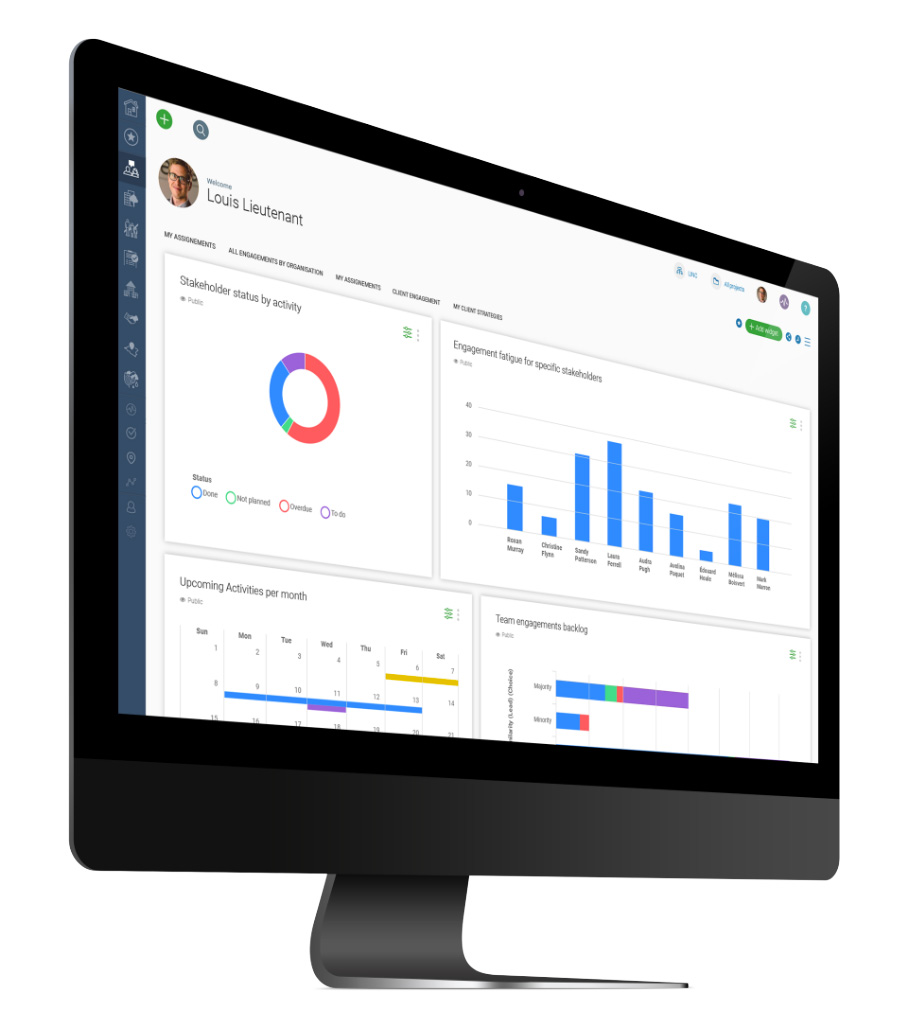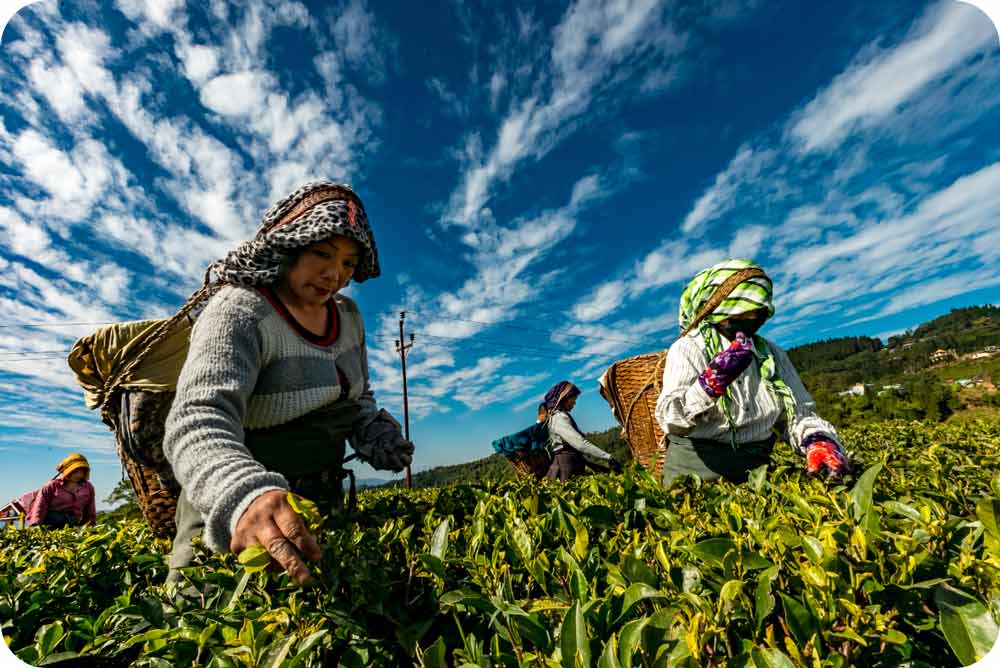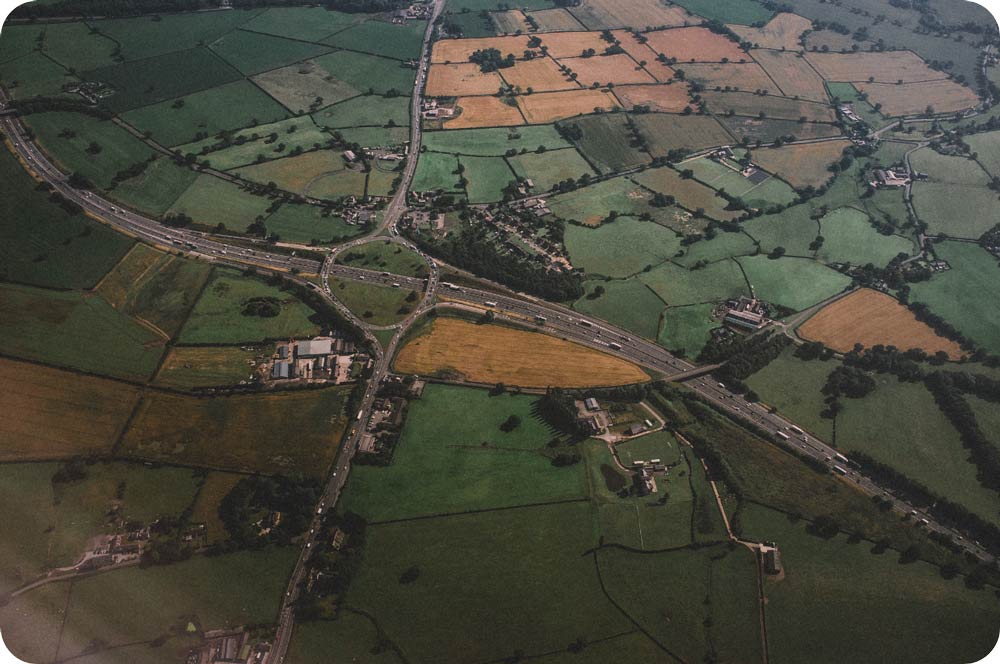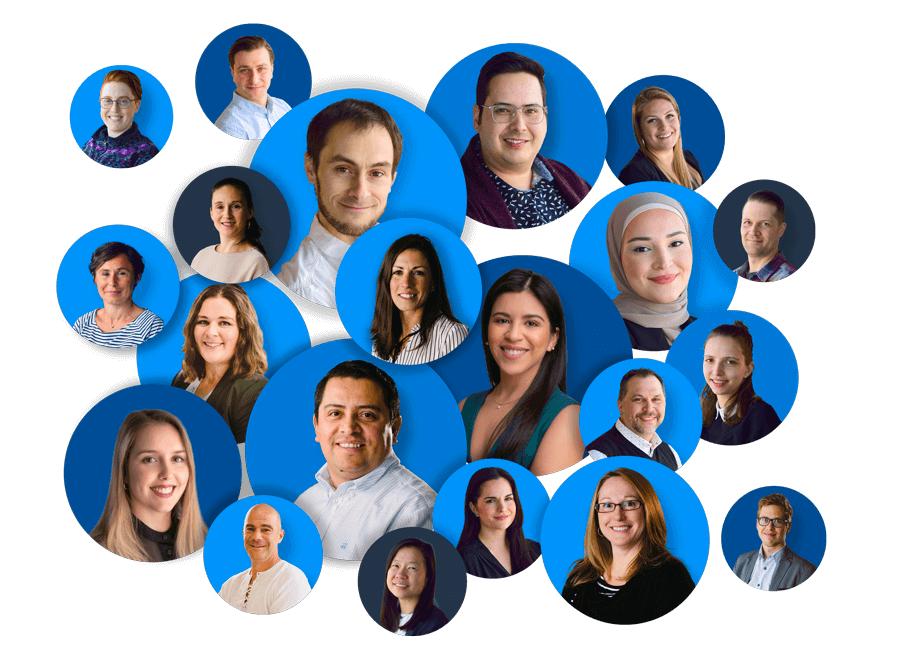Stakeholder Relationship Management Tools
Stakeholder Relationship Management Tools
What is stakeholder relationship management?
Why manage stakeholder relations?
Not all of your key stakeholders will have the same motivations. Some may be in favor of your project; others against. Still others may be on the fence. Good SRM creates a framework for identifying stakeholders and assessing their sentiments, influence and interests, but also for tracking how these may evolve over time. These insights can be used to strategically manage the opportunities and risks stakeholders represent in order to improve the outcome of your project.
How to manage relationships with stakeholders

Software solutions to manage
stakeholder relationships
The vast majority of organizations with large numbers of stakeholders and/or complex, long-term projects rely on specialized SRM software to centralize and manage all stakeholder data and engagement activities with greater efficiency.
Community Engagement
Used by organizations, governments and associations that need to consult, engage and secure the buy-in of communities to advance their project, policy or initiative.
- Identify and manage social risks
- Automatically assess stakeholders for influence and interest
- Generate stakeholder maps to monitor changes in sentiment over time
- Plan engagement strategies; set KPIs, tasks and workflows
- Plan, budget and monitor all community engagement activities
- Link issues, commitments and grievances to avoid oversights
- Resolve issues, disputes and grievances
- Visualize the impacts of the engagement strategy in process and make adjustments in real-time
- Easily create reports for compliance purposes
- Create and maintain a single, up-to-date stakeholder database to ensure corporate memory
- Access the database from any location or device
Public Affairs and Government Relations
Manage public affairs and advocacy campaigns, shape lobbying agendas, and influence the regulations and policies that matter most to your organization.
- Record all stakeholder information, documents & in-person/online interactions
- Avoid being blind-sided – always know who talked to whom about what and when
- Avoid stakeholder fatigue – avoid multiple team members approaching stakeholders for the same issue, or with misaligned messages
- Use the relationship network chart to view & understand the influencer landscape
- Generate reports for all levels of the organization
- Create a lasting corporate memory to empower strategy, decision making and problem solving as stakeholders, and staff, come and go
- Manage public affairs, shape lobbying agendas, influence regulations & policies
Access & record information on the go with the mobile app - Link advocacy campaigns with tasks & workflows to coordinate activities
Asset and Land Management Software
Infrastructure projects can span years. The solution we provide with our software addresses the challenge of retaining complete stakeholder data as stakeholders come and go – sometimes many times over – and as data gets passed from one team to the next.
- Map all stakeholders & assets to visualize affected individuals, at-risk zones and more
- Develop fair & transparent acquisition processes
- Link all stakeholders & activities to assets for complete traceability
- Record all stakeholders, engagement activities & payments for institutional memory
- Prepare compliance and regulatory reports
- Protect confidential information by limiting access on a need-to-know basis
- Document and manage heritage sites with transparency and accountability to facilitate agreements with affected communities
Environmental & Social Performance Software
Makes it easier for organizations to track, report and demonstrate the impacts of their ESG strategy. Demand for this solution has skyrocketed as companies face mounting pressure from regulatory bodies, investors and consumers to adopt more sustainable practices.
- Track sustainability metrics and report results consistently
- Measure the success of your sustainability strategy to boost your ESG score
- Prove how social investments are supporting corporate sustainable development goals
- Demonstrate measurable outcomes and impact on your brand value
- Grow triple bottom line over the long term by integrating sustainability KPIs into business model
How to choose a stakeholder
relationship management solution?
SRM systems can vary widely in terms of features, functionality and user-friendliness. The below list is by no means exhaustive, but it will help you narrow down your options.
SUPPORT to maximize user adoption & ongoing system usage:
- Initial needs assessment
- System configuration
- Data import
- User onboarding and training
- Ongoing customer care & support
- Online learning center
- Online phone/helpdesk
- Support available in English, Spanish and French
COMPLIANCE with industry standards for enterprise security to ensure the confidentiality, integrity and availability of your data:
- 24/7 system monitoring by dedicated tech support team
- Infrastructure, network, and application protection
- Business continuity and disaster recovery
- Architecture, identity and access management
COMMITMENT to keeping the solution up-to-date and relevant for your team:
- Regular updates and new features
- Global community of practice sharing feedback on best practices
- In-house development team open to integrating customer requests for new functionalities
FEATURES to make your day-to-day work easier and more productive:
- Mobile app for entering and retrieving information on the go
- API to connect your other business applications
- Outlook add-in
- Grievance and feedback portal
- Integrated GIS & mapping
- Stakeholder mapping functionnality
- SMS sent and received right in the plateform
- Multilingual interface
What are the benefits of good stakeholder relationship management?
Organizations often start to take stakeholder relationships seriously when the success of a key project, product or policy is on the line. Making SRM an integral part of operations can lead to the type of long-term stakeholder trust that protects a company’s reputation and bottom line through good times and bad.
How stakeholder relationship management can be beneficial for specific industry sectors
Mining
Energy & Utilities
Transportation
Food industry
The food industry is not immune to society’s waning trust in government and corporations. In an industry with so many influential stakeholders up and down the entire supply chain, those in the food industry will need to take stakeholder concerns into account to increase societal trust in their risk management practices and safety of their products. Taking the time to understand stakeholder concerns may also reveal useful insights about shifting values and policy demands, giving food and beverage companies a head’s up of what’s to come.












